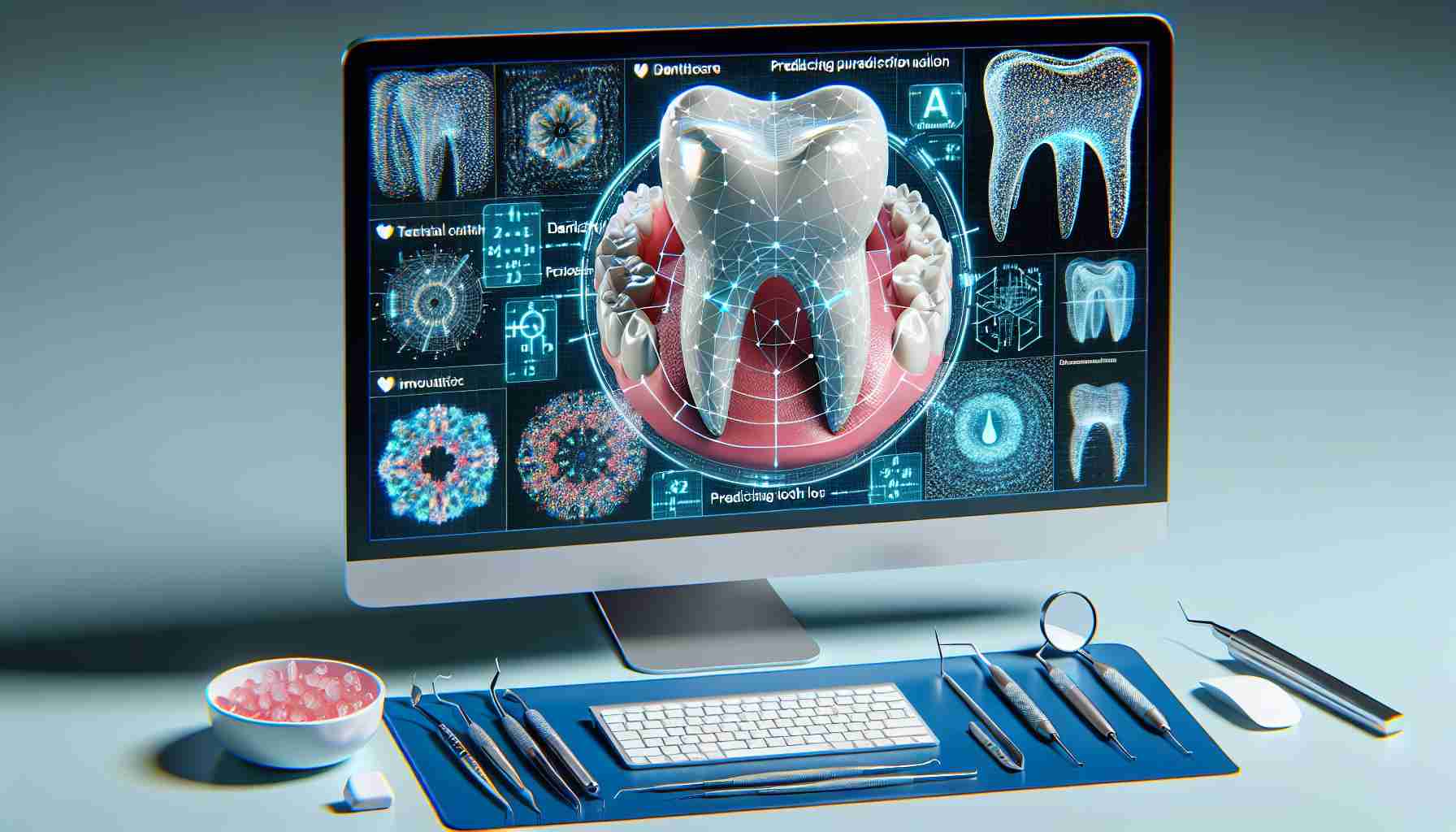A groundbreaking study presented at the 102nd General Session of the International Association for Dental, Oral, and Craniofacial Research (IADR) has demonstrated how artificial intelligence (AI) can be used to forecast the likelihood of permanent tooth loss. By analyzing various behavioral and lifestyle factors, AI algorithms were able to provide valuable insights into overall oral health.
Led by Seyedmisagh Imani from Marquette University School of Dentistry, the study utilized data from the Center for Disease Control’s 2022 Behavioral Risk Factor Surveillance System (BRFSS). A diverse range of factors, including age, gender, education, income, smoking history, alcohol consumption, physical activity, and dental care visits, were collected from 293,398 individuals.
Through rigorous data cleaning and analysis, the research team employed five different machine-learning techniques to predict tooth loss. These techniques included K-nearest neighbor, logistic regression, decision trees, random forests, and extreme gradient boosting trees. Interestingly, while age and routine dental care emerged as the strongest predictors for tooth loss, socioeconomic conditions also played a significant role in determining the risk of this condition. The study highlighted that models incorporating socioeconomic characteristics outperformed those relying solely on clinical dental indicators.
The most successful machine-learning algorithm, with an impressive predictive performance of 81.2% (AUC), was the extreme gradient boosting trees. This finding underscores the potential of AI technologies to accurately predict tooth loss risk based on behavioral risk factors.
Importantly, this study emphasizes the importance of considering socioeconomic factors when developing predictive models for dental care. By incorporating these factors, the accuracy and effectiveness of the models can be enhanced, allowing healthcare professionals to prioritize preventive interventions. This breakthrough has the potential to revolutionize dental care by targeting individuals at the highest risk of tooth loss, ultimately improving patient outcomes.
FAQ:
Q: How did the study utilize artificial intelligence?
A: The study utilized artificial intelligence algorithms to analyze various behavioral and lifestyle factors and predict the likelihood of permanent tooth loss.
Q: What were the strongest predictors of tooth loss?
A: Age and routine dental care were identified as the strongest predictors of tooth loss.
Q: Which machine-learning algorithm performed the best?
A: The extreme gradient boosting trees algorithm exhibited the highest predictive performance in determining tooth loss risk.
Q: Why is it important to include socioeconomic factors in predictive models?
A: Incorporating socioeconomic factors improves the accuracy and effectiveness of predictive models, enabling healthcare professionals to identify individuals at the highest risk of tooth loss and prioritize preventive interventions.
Source: International Association for Dental, Oral, and Craniofacial Research. (2024, March 19). Artificial intelligence algorithms for understanding the determinants of oral health. Retrieved from [URL here]
A groundbreaking study presented at the 102nd General Session of the International Association for Dental, Oral, and Craniofacial Research (IADR) has shown the potential of artificial intelligence (AI) in predicting the likelihood of permanent tooth loss. This study offers valuable insights into overall oral health by analyzing behavioral and lifestyle factors through AI algorithms.
The dental care industry has been rapidly evolving with the advancements in AI technology. AI is being increasingly utilized to improve diagnostic accuracy, treatment planning, and patient care in dentistry. The ability to predict tooth loss risk is a significant development that can revolutionize dental care by providing targeted interventions and improving patient outcomes.
The global dental industry is experiencing substantial growth, driven by factors such as increasing oral health awareness, a growing aging population, and technological advancements. According to a report by Grand View Research, the global dental market is expected to reach a value of $40.9 billion by 2025, with a CAGR of 5.8% during the forecast period.
The incorporation of socioeconomic factors in predictive models is crucial for accurate risk assessment and intervention planning in dental care. Socioeconomic conditions, such as income, education, and access to dental care, can significantly impact oral health outcomes. By considering these factors, healthcare professionals can identify individuals at the highest risk of tooth loss and prioritize preventive measures.
To improve oral health strategies, it is essential to collaborate with policymakers, dental professionals, and healthcare organizations. The integration of AI technologies into dental practice can facilitate data-driven decision-making and personalized treatment plans, leading to better oral health outcomes for patients.
For more information about the use of AI in dentistry and the latest advancements in oral health, visit American Dental Association or FDI World Dental Federation. These resources provide comprehensive insights into the industry, market forecasts, and ongoing initiatives related to dental care.

